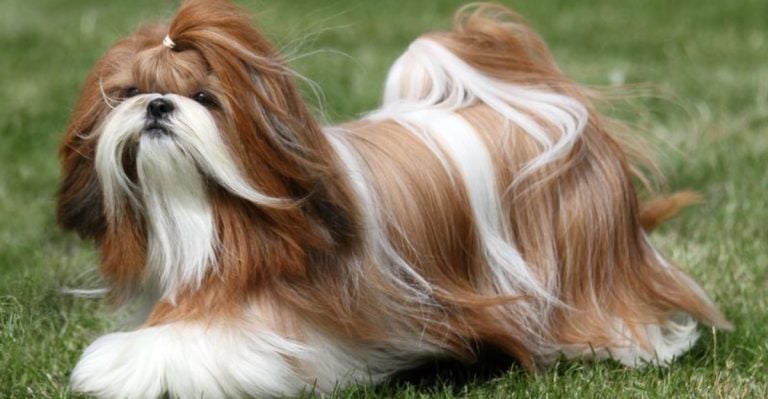Which German Shepherd Is Right for You? Discover These 9 Distinct Types
Loyal, intelligent, and undeniably iconic, the German Shepherd is one of the world’s most beloved dog breeds—and it’s not hard to see why. These dogs are natural protectors, fast learners, and fiercely devoted to their families. You’ve likely seen them in action: helping police officers, assisting people with disabilities, or playing fetch in a neighborhood park. But what many people don’t realize is that there’s no such thing as a “one-size-fits-all” German Shepherd. In fact, there are nine distinct types—each with its own personality, strengths, and purpose.
If you’ve ever thought about bringing a German Shepherd into your life, understanding these different types can make all the difference. Some were bred for high-performance roles like search-and-rescue or military work. Others were developed with appearance and companionship in mind, making them more suitable for home life and relaxed routines. While they all share the noble German Shepherd spirit, their day-to-day energy, temperament, and care requirements can vary more than you’d expect.
In this guide, we’re breaking down the nine main types of German Shepherds—excluding variations based on coat color—so you can discover which one best matches your lifestyle and goals. Whether you’re looking for a loyal jogging partner, a family-friendly protector, or a calm, regal companion, there’s a type of German Shepherd that fits the bill.
From the driven West German working line to the oversized and affectionate King Shepherd, each version of this breed brings something special to the table. Read on to find your perfect fit. Whether you’re a first-time owner or a seasoned dog lover, knowing the difference between these types will help you form a bond that lasts a lifetime. Let’s meet the nine distinct German Shepherds you should know.
1. West German Working Line
Considered the purest connection to Captain Max von Stephanitz’s original vision, these dogs embody the true essence of what German Shepherds were meant to be. Their balanced temperament makes them exceptionally versatile companions.
West German Working Lines typically display moderate drive – enough to excel at tasks but not so intense that they become challenging in a family setting. Their physical structure tends toward functionality rather than exaggerated features.
Owners appreciate their clear-headed decision-making abilities and natural protective instincts that don’t cross into aggression. If you’re seeking a dog that can transition seamlessly between work mode and relaxed family member, this line offers the quintessential GSD experience.
2. East German (DDR) Working Line
Born from Cold War necessity, these remarkable dogs were developed under East Germany’s rigorous breeding program. Their distinctive blocky heads and dense bone structure hint at their exceptional durability in demanding conditions.
DDR Shepherds mature slowly, often not reaching full mental development until 2-3 years of age. This delayed maturation contributes to their legendary longevity and resilience against health issues that plague other lines. What truly sets them apart is their unwavering focus and seemingly tireless work ethic.
Military and police units worldwide still seek these dogs for their natural tracking abilities and calm confidence in high-pressure situations. They thrive with experienced owners who provide clear boundaries and meaningful work.
3. Czech Working Line
Forged in the kennels of Czechoslovakia, these dogs carry bloodlines meticulously developed for border patrol work. Their striking dark coloration and wolfish appearance reflect their no-nonsense working heritage. Czech lines possess an almost legendary prey drive that makes them exceptional at tracking and apprehension work.
This intense focus translates to remarkable trainability for owners willing to channel their energy constructively. Not recommended for first-time owners, these high-octane shepherds require consistent mental challenges to prevent boredom-related behaviors.
Active families who enjoy hiking, competitive dog sports, or outdoor adventures will find an eager participant in these athletic, agile companions who live to work alongside their humans.
4. American/Canadian Show Line
Immediately recognizable by their distinctive sloped backs and angular hindquarters, these shepherds represent North American breeders’ interpretation of the breed standard. Their rich tan and black coloration often features dramatic markings that catch the eye in the show ring.
While sometimes criticized for exaggerated physical features, responsible breeders within this line produce dogs with steady temperaments ideally suited to family life. Their moderate energy levels make them adaptable to suburban living.
These shepherds typically display a softer temperament than their working counterparts, making them especially appropriate for households with children or elderly members. Their natural affinity for human companionship creates dogs that thrive on being integral family members rather than working partners.
5. West German Show Line
Draped in rich red and black coats, these shepherds represent German breeders’ commitment to maintaining both beauty and functionality. Unlike their American counterparts, they retain straighter backs and more moderate angulation while still presenting an impressive silhouette.
Most carry the recessive gene for long coats, occasionally producing stunning long-haired puppies within otherwise standard litters. Their temperaments strike a pleasant middle ground – confident but not overly sharp, energetic but capable of settling down. Families appreciate their natural protectiveness balanced with good-natured interactions with welcomed guests.
These dogs excel in various environments, from competitive obedience rings to active households. Their versatility makes them popular among those wanting the classic German Shepherd look with a more approachable personality.
6. King Shepherd
Standing significantly taller than standard GSDs, these magnificent dogs represent a relatively recent development in shepherd variants. Their creation involved careful crossing of German Shepherds with Alaskan Malamutes and occasionally Great Pyrenees to achieve their impressive size.
Despite their imposing presence, King Shepherds typically display remarkably gentle temperaments. Their development focused specifically on eliminating aggressive tendencies while maintaining protective instincts. Health-conscious breeders work diligently to address common GSD issues like hip dysplasia through selective breeding.
Families seeking a shepherd’s loyalty in a more laid-back package often find these giants irresistible. Their patient nature particularly suits households with respectful children, though their size requires appropriate space and consideration.
7. Shiloh Shepherd
Tina Barber’s vision of recreating the shepherd of yesteryear resulted in these magnificent dogs with their distinctively plush coats and substantial frames. Their development prioritized temperament stability and health improvement over working drive.
Unlike standard GSDs, Shilohs mature slowly, maintaining puppy-like playfulness well into adulthood. Their intelligence remains quintessentially shepherd-like, but with softer edges that make them especially adaptable to therapy and service work. Hip and elbow evaluations are mandatory in responsible breeding programs, addressing concerns about orthopedic issues.
Families looking for a shepherd’s loyalty and intelligence without the intensity of working lines often find their perfect match in these gentle giants. Their natural affinity for children makes them exceptional family companions.
8. White Swiss Shepherd
Once considered a fault in traditional German Shepherds, the white coat has become the hallmark of this now-separate breed. Their stunning snow-white appearance belies their intelligence and capability, drawing admiring glances wherever they go.
Swiss Shepherds typically display a more sensitive temperament than their colored counterparts. This heightened awareness makes them exceptional at reading human emotions and responding accordingly. Their elegant appearance masks a versatile working dog that excels in agility, obedience, and service roles.
Particularly suited to owners who appreciate a more collaborative relationship rather than a dominant-submissive dynamic, these dogs form extraordinary bonds with their families. Their striking appearance combined with their trainability makes them increasingly popular among those seeking something different from the traditional shepherd look.
9. Dwarf German Shepherd
Resulting from a genetic condition rather than intentional breeding, these uncommon shepherds pack all the standard GSD personality into a smaller package. Pituitary dwarfism affects growth while leaving intelligence and temperament intact. Their distinctive appearance includes standard-sized heads with proportionally smaller bodies.
Many develop beautiful, plush coats that require regular grooming to maintain condition. While the condition can bring health challenges requiring specialized veterinary care, many dwarf shepherds live happy lives with appropriate management.
Their unique needs attract dedicated owners willing to provide specialized care. Despite their smaller stature, these dogs retain the characteristic loyalty, intelligence, and personality that make German Shepherds so beloved, just in a more compact and unusual package.















